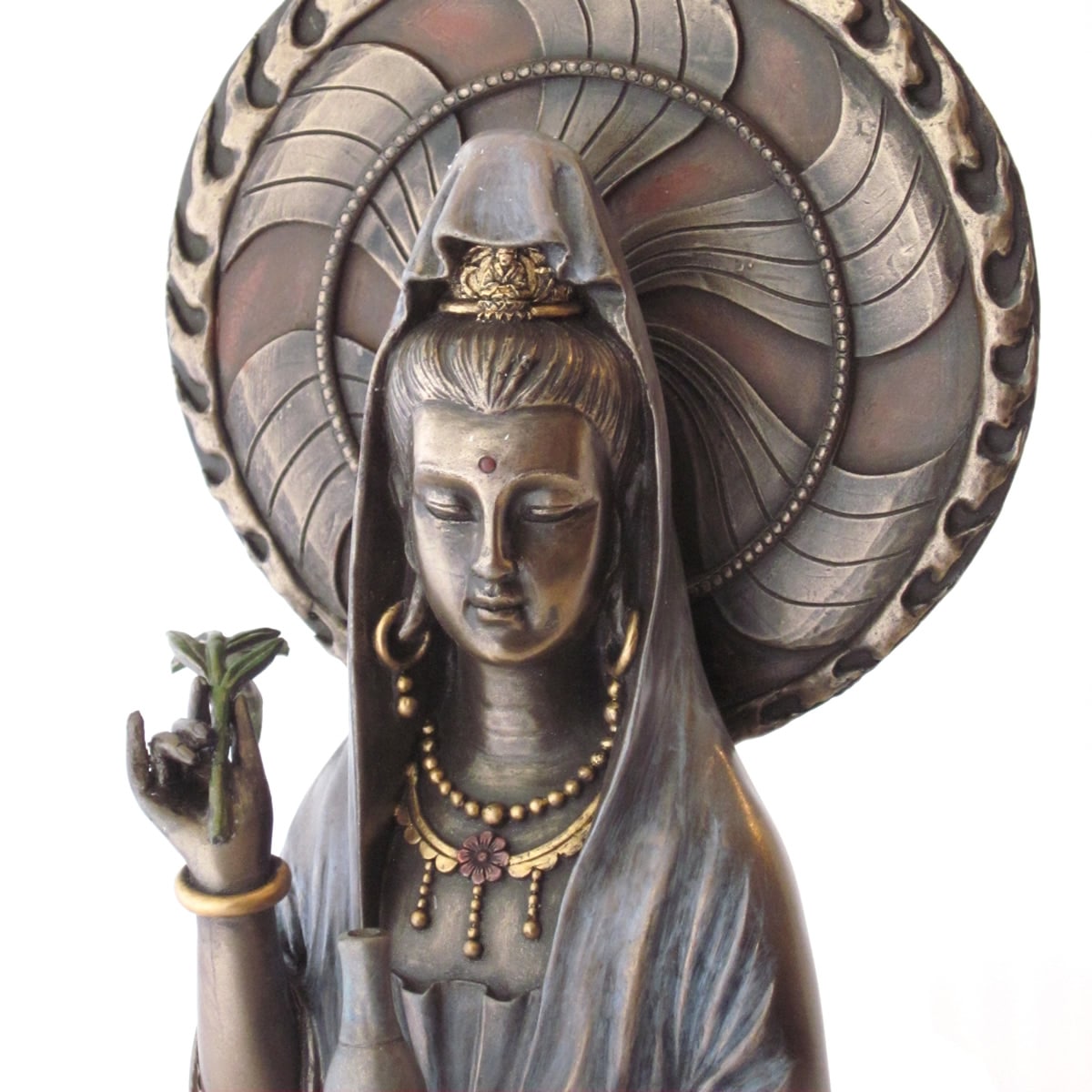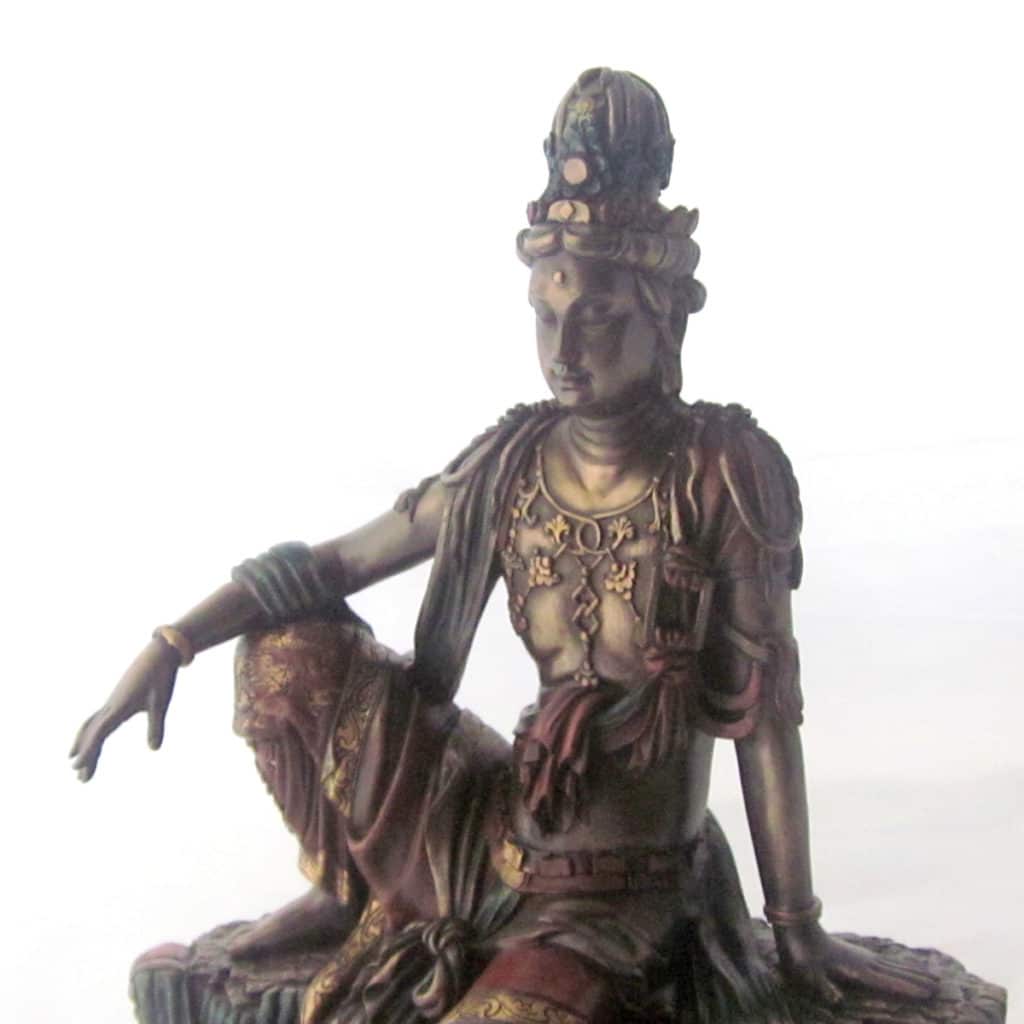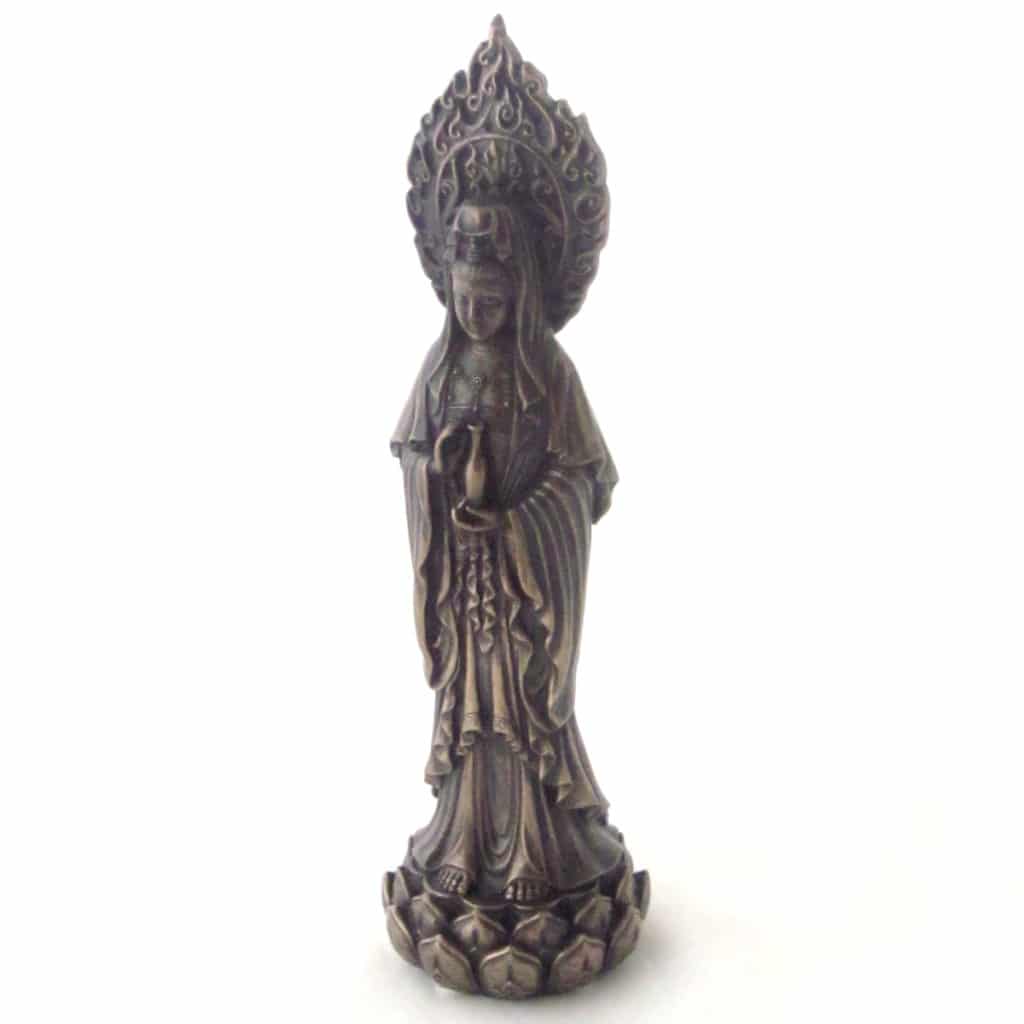
In the pantheon of Buddhist deities, the bodhisattva Kuan-Yin (also Guan-Yin, Guan-Yim, Kuan-Yim, Kwan-im, and in Sanskrit, Avalokiteshvara) occupies a special position of honor and affection. This is especially true in the lay Buddhism of China, Japan, and to a lesser extent Vietnam.
The Goddess of Compassion, Mercy & Kindness
The reason for Kuan-Yin’s popularity is revealed in the long form of her name, Kuan-shi Yin, meaning “Observing the Sounds (or Cries) of the (human) world,” more especially the manifestation of compassion for suffering humanity. The story is told that the goddess was about to enter Nirvana when she heard the anguished cries of a human. She immediately turns aside in order to extend relief to the one in pain, thereby forfeiting her place in paradise.
Not surprisingly, Kuan-Yin is regarded as the supreme exemplar in Buddhism of sacrificial compassion, a compassion that ensures her a revered place in popular devotion. As summarized by one scholar,
“Other gods are feared, she is loved; others have black, scornful faces, her countenance is as radiant as gold, and gentle as the moonbeam; she draws near to the people and the people draw near to her.”
Kuan-Yin Representations
Interestingly, Kuan-Yin was male in her original manifestation in the first century. Kuan-Yin remained male, until in the course of the seventh to the twelfth centuries he metamorphosed into the beloved goddess of compassion. Now only rarely is Kuan-Yin depicted as a male.
Statues and paintings depicting Kuan-Yin as a female are of two broad types. In one she sits, unsmiling, her right arm resting languidly on the knee of her upraised leg, as in this statue.
The other portrays the goddess as a standing figure, slim and attractive, with a beneficent facial expression. Frequently she is shown holding a vase of water and a willow branch; or standing atop a dragon; or flanked by two children or two warriors.
Occasionally she is presented as having a thousand arms, the better to enable her to minister to humankind. Many have noted the similarity to the Virgin Mary of Christianity in both attributes (compassion and caring) and representations (serenity and comeliness, and often with cherubs or other heavenly attendants). In the words of one scholar “As Mary is the guiding spirit of Rome, so is Kwan Yin of the Buddhist faith..” Additionally, both Kuan-Yin and Mary are sometimes the objects of localized devotions with their own myths, ritual practices, and pictorial art.
Innumerable myths and stories of miraculous interventions are associated with the goddess, and many of these are enshrined in the lore and pious practices of popular Buddhism.
Kuan-Yin is also the reputed author of a multitude of sayings and aphorisms, such as:
“One who is overwhelmed with hate cannot know the good and cannot see things as they are.”
“Do not drag the negative past into the present. Understand the possibilities of the present. The present is our way, our vehicle, for changing reality. Your door of escape is right here.”
“With the jeweled necklace of concentration, wrong thoughts cannot arise, nor can the mind be distracted. So let this be your adornment.”
We carry a small selection of products featuring Kuan-Yin. Our favorite Kuan-Yin statues can be found here, and our wood mala with a tiny hidden Kuan-Yin is here.



Is the small Kuan-Yin metal or resin?
It’s “cold-cast bronze” which is a mix of metal (bronze) and resin.